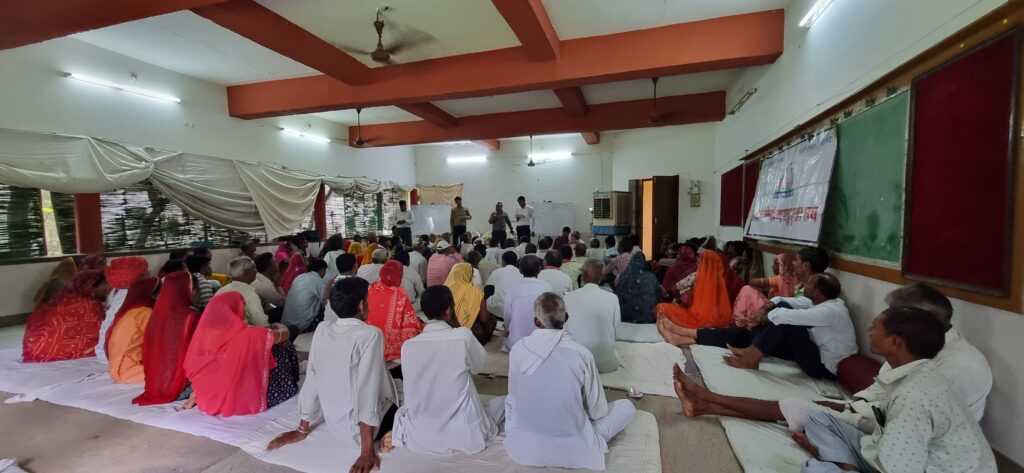Genesis
The Union, when it was founded in 2012, had already been in existence in various forms for several years prior. Small cohorts and collectives had been meeting across different places. Resources were limited, and there were no immediate benefit programs or schemes, unlike the ones we have today.
People were made aware of the importance of the union and the necessity of organizing, even without tangible benefits. They were introduced to the concepts of the organized and unorganized sectors and the disparities between them.
Why was it that the workers in these sectors had to worry about where their food would come from the next day, while people working in corporations, large factories, or government institutions did not face such struggles?
The government seemed to care only for a small group that had a safety net, while millions of workers, especially construction workers, were left without consideration. The core issue was that their work was not seen as valuable enough to warrant any social safety measures.

Public Institutions And Workers’ Distrust
The workers don’t have much faith in larger public institutions, and rightly so. They often feel intimidated by government structures—from banks to police stations, hospitals, and schools. One reason for this is the way they have been treated—or rather, neglected—by these institutions. Politicians only remember them during election season, and even then, they focus solely on local workers, ignoring migrant ones.
The issues they face are numerous: being underpaid, sometimes not paid at all, living in cramped rooms without proper ventilation. Or, in some cases, under the open sky in makeshift settlements—not just for months but for years and decades. In the face of these problems, what options or choices do they really have? What was their identity?
Many workers didn’t even want to identify as workers or labourers. They would rather say they were farmers, even though the government often neglected them too. At least the farmer’s plight was more visible, even though they were largely ignored.
The option they were left with, and eventually saw, was to come together—to demand, or rather fight, for their rights, for recognition, for fair treatment, and for their identity and dignity. This was the foundation on which the collectives were built, and eventually, a worker’ union was born.
Lessons From The Past
“We used to travel from morning to night, moving from one place to another. It didn’t matter how many people attended the meetings—sometimes only 15 would show up. That’s how we started. We had no office space, so every tree became our office, every majdoor bhai’s house was our space. Over time, we earned the confidence and trust of the people, and that made the path a little easier.”
Reflecting on the present, one of the oldest facilitator of the workers’ union *Raam Ji acknowledges there have been mistakes. “As a union, one should always stay one step ahead and adapt to changing circumstances,” he says. “Beyond focusing on government schemes, we need to strengthen our foot soldiers—our cadres on the ground. Each area has its own set of issues, and we must address them, not just push people towards government schemes. That shouldn’t be the only reason for people to join the union.”
He adds, “A lot of union members, while organizing meetings or camps, focus solely on the BOCW schemes but fail to highlight the other crucial work the union does—like legal support. We help workers who haven’t been paid by contractors or those who have suffered abuse at the hands of builders. It’s essential to emphasize what the union has achieved for workers since its inception, from pushing for improvements in basic needs like food, clothing, and housing, to advocating for better budget allocations and NREGA work.”
Raam Ji concludes, “We’re beginning to understand these challenges better, and though it’s late, it’s better than never. Now, it’s the responsibility of senior members to instil more confidence in our cadres and find creative ways to engage our workers,”
Managing Growth And Membership
The workers’ union has grown considerably and now boasts more than 14,000 workers as its members. This growth came with challenges, including managing and increasing membership. Once certain members receive some benefits, there is also the possible threat that as the membership swells, the benefits and the complete induction of members in the core ideology and purpose of the collectivization takes a back seat.
In these circumstances, the creation of laabhaarthi, or beneficiaries, rather than educated and aware workers occurs. The union’s members, particularly those in leadership roles, have noticed this and are now questioning how to maintain the union’s core values while adapting to the changing needs of the workers.
There is also the problem of government budgets, which often fall short, leading to dissatisfaction among members when they do not receive the benefits they were promised. Most of the time, it is not the government who is blamed for this but the union, since, in their eyes, they paid the union for filling up the forms.
Youth And The Union: Bridging Generational Gap
Another issue is the average age of the members of the workers’ union, which is close to 40 and above. This suggests the need to attract younger people to the union. The approach will have to be different than before, given this younger generation has already been exposed to a different world with the penetration of smartphones and the internet. The things that excite them are different, and therefore their aspirations and dreams are different than those of their parents and grandparents.
This again puts the onus on the union: what are some ways through which we can address this issue? There are ideas, including trying to tap the potential of social media. It may not be enough but it will be something new and and it seems time has come to implement them on the ground.
It’s essential for the worker’s union to stay dynamic, to learn from its mistakes, and to find new and innovative ways to engage workers. This is the only way to ensure that the union not only survives but thrives.
Also Read: A Deep Dive In To The Financials Of Migrant Workers




0 Comments